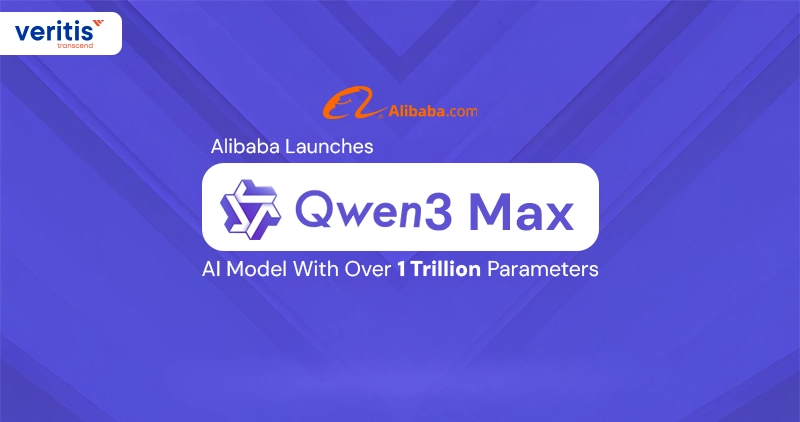
Alibaba AI has launched Qwen3 Max, a production grade Large Language Model (LLM) that exceeds 1 trillion parameters. This milestone transcends marketing and marks the transition of trillion parameter architectures from research prototypes into enterprise grade systems engineered for production workloads. Designed for sustained context, advanced reasoning, and multistep agent workflows, Qwen3 Max offers a practical and scalable path for organizations evaluating generative AI at enterprise scale.
What Qwen3 Max Brings to the Table?
Qwen3 Max is engineered for real workloads, not benchmark headlines. It supports an ultralong context window (reported at 262,144 tokens), is accessible through Alibaba Cloud Model Studio, and is designed for sustained, multistep tasks where retaining a long document history is crucial. That makes it well suited for long form codebases, legal and regulatory corpora, extended customer conversation threads, and orchestrated agent workflows.
Early performance signals emphasize strengths in code generation, mathematical reasoning, and multiagent orchestration, areas where sheer model scale and careful architecture tuning continue to deliver measurable gains. Enterprises building developer productivity tools, intelligent RPA, and advanced automation stand to benefit from improved code suggestions, more reliable test automation, and higher quality contextual summaries.
Enterprise Implications and Practical Actions
Alibaba’s Qwen3 Max is paired with clear commercial intent: cloud delivery, tiered pricing, and production plumbing that accelerate enterprise adoption. That matters because vendor scale and cloud integration are as important as raw model capability when you plan production rollouts. However, scale introduces operational realities, inference costs, latency, context management, and engineering patterns such as caching and chunking that must be addressed to make deployments both performant and economical.
For C-suite and technical leaders, practical next steps are straightforward:
- Run workload pilots on representative datasets (full code repos, lengthy contracts, conversation histories) and measure accuracy, latency, and TCO rather than relying on synthetic benchmarks.
- Validate compliance and data residency with Alibaba Cloud for regulated workloads and confirm SLA and support models.
- Architect for cost efficiency by combining model tiers, using smaller models for routine tasks, and reserving Qwen3 Max for high context, high value exceptions.
- Maintain vendor neutrality to enable federating or switching inference providers as the market and pricing evolve.
Conclusion
Qwen3 Max is an AI breakthrough in Generative AI, a production grade LLM with over 1 trillion parameters and an ultralong 262,144 token context window. It delivers sustained context, multi-step reasoning, and agentic workflows while requiring model parallelism and sharding, optimized large tensor kernels, quantization, and mixed precision, as well as efficient context management such as chunking, retrieval augmented generation, and caching, to balance latency, throughput, and cost in production.
At Veritis, we help enterprises assess models like Qwen3 Max, design pragmatic integration plans for Large Language Models (LLM), and build governance that balances innovation with compliance.
Additional Resources:
- Google Introduces Ironwood Chip for High-Speed AI Applications
- Hackers Exploit SharePoint Flaw in Major Global Cyberattack
- OpenAI Launches SearchGPT Prototype for Testing as New AI Search Engine
- DeepSeek AI – The Next Frontier in Artificial Intelligence Innovation
- Google Project Mariner, the AI Agent Redefining How You Navigate the Web